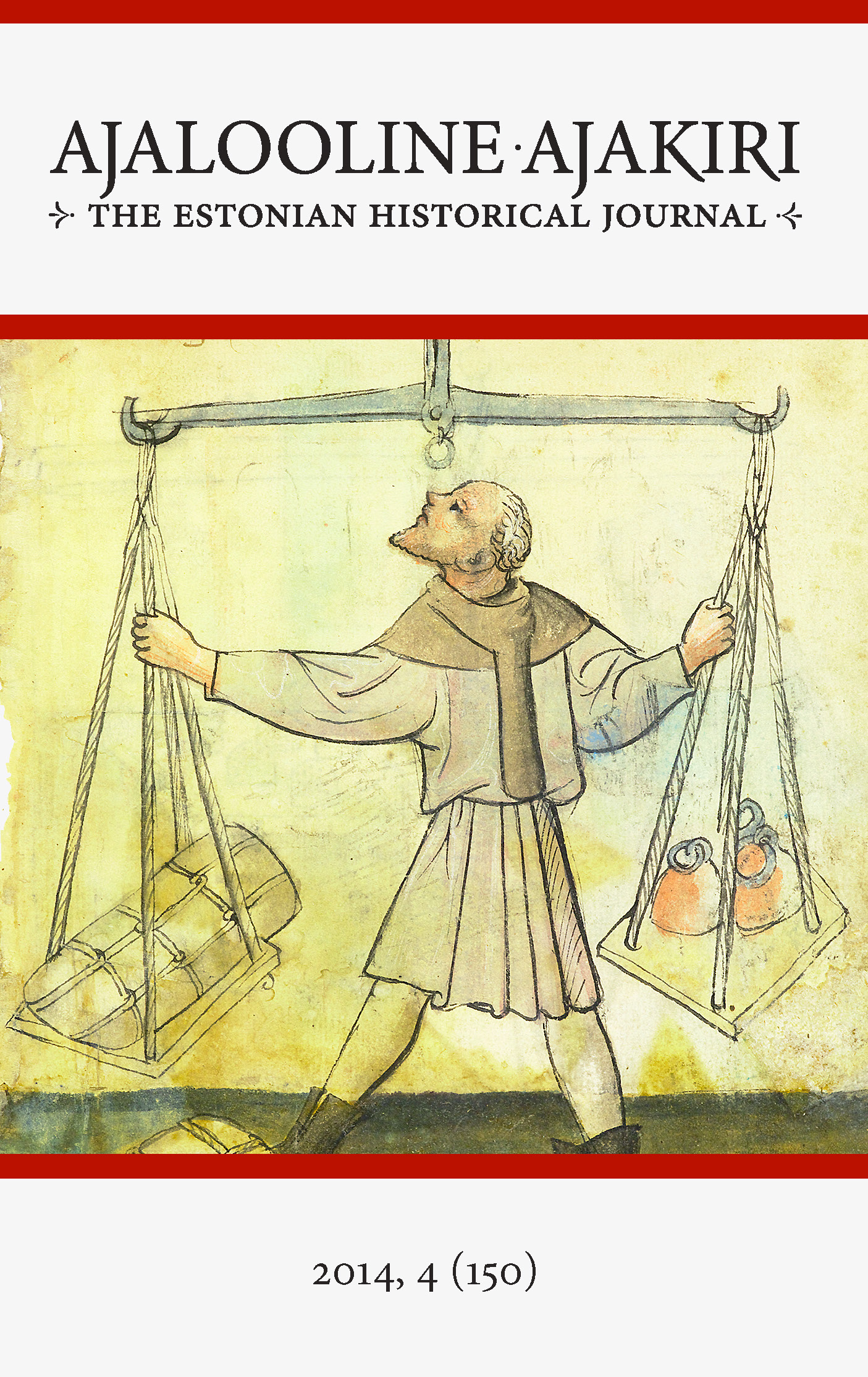Vastuseks Kalle Kroonile kroonutalupoegade seisundi küsimustes [Abstract: A reply to Kalle Kroon on issues related to the status of the crown peasantry]
DOI:
https://doi.org/10.12697/AA.2014.4.05Abstract
The Estonian Historical Journal has actively mediated the debate on the issue of Swedish King Charles XI’s plans to abolish serfdom in the provinces of Estland and Livland after the reduction of the estates in the 1680s. The review by Kalle Kroon of “Eesti ajalugu III” (History of Estonia, vol. III, ed. by Enn Küng and Marten Seppel, Tartu 2013) published in the last issue can be clearly seen as a continuation of this debate. Alas, Kroon has found non-existent contradictions in the reviewed volume, e.g. the volume does not argue that peasant movement was totally unaccepted or that peasants could not complain about their high dues during the revision. Kroon states that there were “quite a number” of peasants who bought their freedom from corvée after the reduction of estates. On the contrary, Ülle Tarkiainen has shown that only 60 farmsteads out of 6387 paid socalled ‘Leide’ instead of corvée in the 19 parishes of Northern Livland. It should also be pointed out that even as late as 1693, the governor-general of Livland saw only Swedes and Finns (but not Estonians and Latvians) as potential reserve soldiers in the event that the Swedish system of indelningsverket were to be applied in the Baltic provinces. Kroon criticises the studies by Elina Öpik that appeared in the Soviet period and believes that the chapter in “Eesti ajalugu III” on the status of the crown peasantry is merely a copy of Öpik’s conception. Historiographically speaking, however, it is important to note that Elina Öpik changed her views over the course of fifty years and there are some principal differences between her standpoints (especially the older ones) and the conclusions of the chapter under consideration. Kroon is convinced that crown peasants were not attached to estates and in particular that the younger sons of a household could leave farming at will. However, sources very clearly verify that when apprehended, all fugitive crown peasants were returned to their previous manor in the 1680s and 1690s. There is no evidence of the peasants’ freedom to leave of their own will. In conclusion, it should be agreed that after 1681 the status of the peasantry on crown estates differed to a certain degree from that of the peasantry on noble estates as the King had demanded. It was forbidden to sell off crown peasants, the taxes and dues of crown peasants were fixed and partly standardised, the leaseholders of crown estates could no longer act as omnipotent lord over the peasants in police and court matters, and crown peasants could sue their lords in the royal courts or the provincial administration. However, crown peasants were still bound to their manors, their property rights were very limited, and they had no right to possess weapons. Crown peasants were not copy- or leaseholders of their farmsteads and their customary dues to the manor were not regarded as rent. Rather they were merely the property of manors that were leased out under the supervision of the economic management governors of the provinces. KEYWORDS: Serfdom, crown peasantry, reduction, Baltic provinces, Sweden.Downloads
Download data is not yet available.
Downloads
Published
2014-12-28
Issue
Section
Väitlus / Debate

